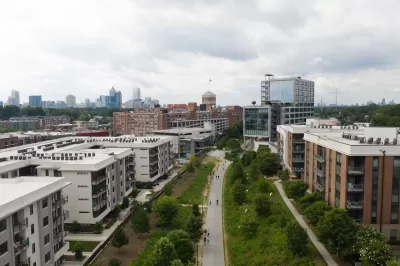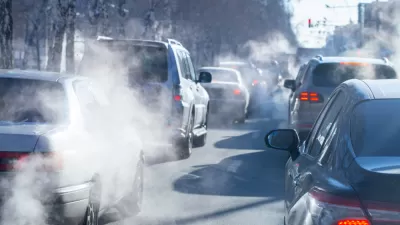The state is diversifying its energy sources to reduce carbon emissions by 50% by 2030, in line with federal climate goals.

The state of Georgia is making progress on its emissions reduction goals, "putting it closer to a new White House target of a 50% reduction in the U.S. by 2030 from 2005 levels," reports Matt Kempner for The Atlanta Journal-Constitution. The reductions are a result of "changes by not only big companies, developers and power producers but also individual metro Atlantans, many of whom have already partially reduced their carbon footprint, perhaps without fully realizing it." With an impressive 28% reduction in emissions between 2005 and 2018, "[f]ederal figures show that only five states have made larger percentage cuts than Georgia in carbon emissions from fossil fuel combustion."
The state's electric utility, Georgia Power, along with utilities across the country, has switched to natural gas for lower emissions. "Another carbon-free power source on the rise: solar power, with big gains in technology and far lower prices." The state is also poised to complete a nuclear power generation project.
"But there’s a lot more carbon to squeeze out, including in the electricity system, Georgia’s second-largest source of carbon belching, behind only transportation, according to the latest figures from the U.S. Environmental Protection Agency." Whereas in the past Georgia Power "has resisted federal mandates for change by power companies," Southern Company, Georgia Power's parent company, now "wants government policies that promote investments in research, development and deployment of new energy technologies, long-lasting batteries, new nuclear power options, energy efficiency and more favorable taxes." To promote cleaner energy, says Georgia's Sierra Club chair Daniel Blackman, "state elected officials need to reenact a canceled tax credit for electric vehicle purchases, boost construction of charging stations and push Georgia Power to close plants sooner."
FULL STORY: How Georgians might reach new U.S. target for 50% carbon cut

Alabama: Trump Terminates Settlements for Black Communities Harmed By Raw Sewage
Trump deemed the landmark civil rights agreement “illegal DEI and environmental justice policy.”

Study: Maui’s Plan to Convert Vacation Rentals to Long-Term Housing Could Cause Nearly $1 Billion Economic Loss
The plan would reduce visitor accommodation by 25% resulting in 1,900 jobs lost.

Why Should We Subsidize Public Transportation?
Many public transit agencies face financial stress due to rising costs, declining fare revenue, and declining subsidies. Transit advocates must provide a strong business case for increasing public transit funding.

Paris Bike Boom Leads to Steep Drop in Air Pollution
The French city’s air quality has improved dramatically in the past 20 years, coinciding with a growth in cycling.

Why Housing Costs More to Build in California Than in Texas
Hard costs like labor and materials combined with ‘soft’ costs such as permitting make building in the San Francisco Bay Area almost three times as costly as in Texas cities.

San Diego County Sees a Rise in Urban Coyotes
San Diego County experiences a rise in urban coyotes, as sightings become prevalent throughout its urban neighbourhoods and surrounding areas.
Urban Design for Planners 1: Software Tools
This six-course series explores essential urban design concepts using open source software and equips planners with the tools they need to participate fully in the urban design process.
Planning for Universal Design
Learn the tools for implementing Universal Design in planning regulations.
Smith Gee Studio
Alamo Area Metropolitan Planning Organization
City of Santa Clarita
Institute for Housing and Urban Development Studies (IHS)
City of Grandview
Harvard GSD Executive Education
Toledo-Lucas County Plan Commissions
Salt Lake City
NYU Wagner Graduate School of Public Service





























